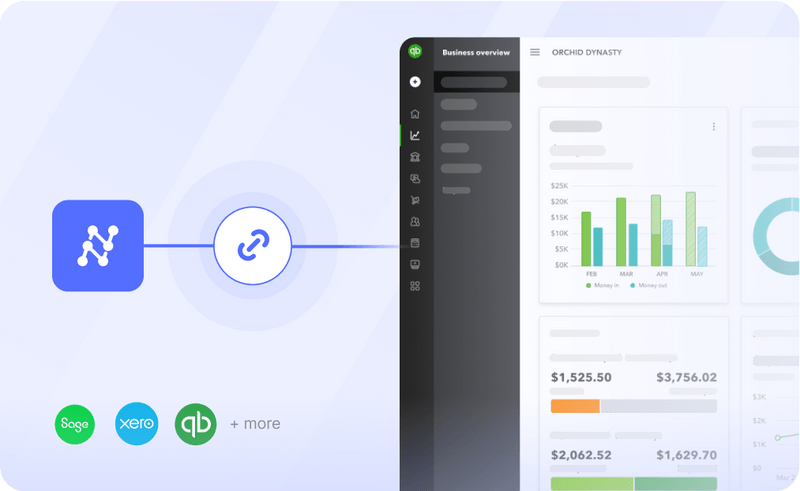Optimizing order capture workflow can transform your order-to-cash process. Enhance efficiency, improve customer experience, and boost revenue. Learn how.

Order capture is the process of receiving, validating, and recording customer orders from across channels to facilitate efficient fulfillment. A smoother capture process often means a faster order-to-cash cycle, fewer mistakes, and happier customers.
Yet, McKinsey's 2023 supply chain survey showed that nearly half of the respondents had not consistently invested in the digital supply chain's core building blocks. Even crazier? This happens when over 90% of orders can be captured electronically without errors. Talk about untapped potential!
Ready to optimize your order capture process? We got you. This guide will discuss what order capture entails, how it fits into the broader order management and fulfillment cycle, and how to optimize it for maximum efficiency and customer satisfaction. Let's dive in!
Understanding the order capture process
When a customer places an order, the first step is order capture. This involves receiving the order from the customer, validating the customer's information and payment method, and then recording the order in your system.
 Comparison of Nanonets OCR's advanced customer order capture capabilities with traditional OCR tools.
Comparison of Nanonets OCR's advanced customer order capture capabilities with traditional OCR tools.It involves several key stages:
Order receipt: This is when you initially receive the order from the customer. It could be via a shopping cart on your website, an email, a phone call, or even a face-to-face conversation. The order will typically include the customer's name, address, item, quantity they wish to purchase, and payment method.
Order validation: The order must be validated first — it helps avoid fulfillment issues. This involves checking the customer's information for accuracy, ensuring the item is in stock, confirming the validity of the payment method, and determining if there are enough funds to cover the purchase.
Order recording: Once the order has been validated, the data is recorded in your digital or physical system. This forms the basis for the rest of the order management process. The order data is shared with other departments, such as inventory management and fulfillment, to ensure a smooth transition from order placement to delivery. It also helps keep the customer informed about their order status.
The role of order capture in order management
We now live in a world where about a quarter of shoppers are ready to shell out more for instant or same-day delivery. Even business customers want a touchless ordering experience that mimics the speed and convenience of consumer-grade shopping.
In such a scenario, order capture plays a pivotal role. It acts as the starting point of the order management process, setting the tone for the entire customer journey. Efficient order capture can help streamline the order-to-cash cycle, reduce errors, and improve customer satisfaction.
 A closer look at Nanonets' information capture and extraction process for orders.
A closer look at Nanonets' information capture and extraction process for orders.Here's how it fits into the broader order management cycle:
Inventory management: When the order capture is accurate and efficient, the inventory team will be able to ensure that the right product in the right quantity can be allocated and dispatched. Moreover, it ensures the product database is always accurate, preventing overselling and stockouts.
Order processing: Let’s say you take orders via Instagram DMs. Since the order data would be unstructured, it could easily lead to errors, delays, and credit memos if you fail to capture it correctly. Efficient capture ensures the processing team can turn the order data into structured, actionable information. This can involve creating a sales order, allocating the items from inventory, and preparing the items for shipment.
Order fulfillment: The captured data is used to pick, pack, and ship the items. An efficient capture system can ensure that orders are sent to the right address, using the correct shipping method, and delivered in the expected timeframe. It can also help keep the customer informed about their order status, from when they place the order to when it arrives at their doorstep.
Payment gateway: Accurate order capture is crucial for payment processing. The payment gateway needs the correct information to authorize and capture the payment from the customer's chosen method. This includes the customer's name, billing address, payment method details, and due amount. Errors in this information can lead to payment failures, bad debts, disputes, or even fraud.
Order lifecycle management: When you’ve visibility into the entire order lifecycle, you can make informed decisions and optimize processes. Accurate order capture feeds into this visibility, providing crucial data at every stage, from order placement to delivery and returns. This can help track order status, manage customer expectations, and ultimately improve the overall customer experience.
Ultimately, efficient order capture is more than just the first step in the order management process. It's the foundation that sets the tone for the entire customer journey.
Optimizing the order capture process
A 2020 McKinsey study on sales automation found that best-in-class companies implementing automation could reduce order processing time from two or three days to one or two hours, from confirmed orders until confirmed delivery.
This significant shift can set a business apart in today's competitive market. However, achieving this level of efficiency requires a well-optimized order capture process.
Here are some ways to optimize your order capture process:
1. Capture orders from multiple channels
Potential buyers are everywhere, and hence, it is always great if you can capture orders from where your customers are. However, each channel is different, and capturing consistent order details can be a real headache.
Using Nanonets’ auto-import options and AI-OCR capabilities, you can seamlessly capture order details from various channels as and when they come in. Structured or unstructured, it doesn't matter. Nanonets extracts the data and turns it into a standardized format, ready to be plugged into your order management system.
 A look at the different auto-import options for order capture available on Nanonets.
A look at the different auto-import options for order capture available on Nanonets.Workflow suggestion: Connect your orders@yourdomain.com Gmail account with Nanonets and automate order intake and capture. Every time an order email comes in, Nanonets will automatically extract the necessary information and update your order management system.
2. Enhance order data accuracy
The data that customers enter may not be ready for direct use in your order management system. It may contain incorrect formatting or even typos.
With Nanonets, you get a range of no-code workflows to help you out. They handle everything from date formatting to database lookups. Need to match data or remove commas? They've got you covered.
 The different ways of enhancing order data accuracy with Nanonets
The different ways of enhancing order data accuracy with NanonetsWorkflow suggestion: Use database lookups to verify customer data. For example, you can match the customer's email or phone number with your existing customer database to ensure accuracy.
3. Set up validation rules
Validating order data often involves multiple stages of manual review. Sometimes, you may even call the customer to confirm their details. It doesn’t make for a great experience.
With Nanonets, you can automate this process by setting up validation rules in your workflow. These rules can be configured to match the extracted order details against entries in your database. If something's off, it will be flagged for review. This ensures that the order data is accurate and consistent before processing it.
 Set up database matching validations
Set up database matching validationsWorkflow suggestion: Use the Database matching validation to ensure that the item quantity extracted from an email order matches the number in your inventory database. If not, the order can be flagged for manual review to avoid discrepancies.
4. Automate order entry
Manually entering order data across your CRM, ERP, accounting system, and order management system is super-tedious. To make matters worse, each system may be handled by a different team member. It leads to inconsistent data entry, potential errors, and a whole lot of spreadsheet exchanges!
Nanonets' integrations and APIs simplify this process by enabling seamless and real-time data flow between all your systems. With this integration, you can synchronize customer information, product details, and order data across your order management, shipping, and accounting systems. Moreover, it helps keep your customer, shipment, inventory, and other databases consistently accurate.
 Automate data entry to Microsoft Dynamics 365 with Nanonets
Automate data entry to Microsoft Dynamics 365 with NanonetsWorkflow suggestion: Use the Microsoft Dynamics 365 integration to automate everything from order import, GL coding, customer account creation, and bill sync. This will streamline the process and significantly reduce the chances of human error.
5. Build automated workflows
In manual order handling, steps are like a relay race. After capturing order data, sales and customer success teams check details. They ensure accuracy and understand customer needs. Next, the inventory team checks stock and starts packing. Meanwhile, finance generates the invoice and processes the payment. When items are ready, the shipment team needs to initiate the delivery. You also need to send regular updates to the customer — now that’s a lot of sequential processes.
But what if it's all on autopilot? With Nanonets' workflows, you can automate your whole order process. Plus, our Zapier integration connects Nanonets with 5000+ other apps for full automation. Once an order is in, the system triggers the next steps, like invoice creation, customer alerts, shipment tracking, and payment processing, all with minimal manual interference.
 Build automated workflows on Nanonets with Webhook and QuickBooks.
Build automated workflows on Nanonets with Webhook and QuickBooks.Workflow suggestion: Use our QuickBooks + Webhook workflow to automate invoice creation and customer notifications. When an order is captured, the workflow triggers the creation of a new invoice in QuickBooks. The invoice details are then sent to the customer via an automated email or SMS using the Webhook integration. The system also updates the customer's record in QuickBooks with the new transaction.
6. Appoint Global Process Owners
Typically, each team or department in your organization will have its process owner. However, order capture is a cross-functional process. It involves sales, customer service, inventory, finance, and logistics. If each department is working in isolation, it can lead to inefficiencies and inconsistencies.
Instead, appoint Global Process Owners (GPOs) to oversee and coordinate the order capture process. You can nominate them for each order based on the product type, region, or customer segment. Give them the necessary authority and tools to drive the process. They can ensure that all teams are aligned and working towards the same goal — providing a seamless ordering experience for your customers.
 Use real-time data for more accurate predictions and better decision-making.
Use real-time data for more accurate predictions and better decision-making.Workflow suggestion: Empower your GPOs with Nanonets' dashboard. It provides a real-time view of all order-related activities. GPOs can monitor the progress of orders, identify bottlenecks, and take corrective action. They can also use the dashboard to generate reports and share insights with the team. This helps in continuous process improvement and aids in decision-making.
Businesses can gain several advantages by closely analyzing and optimizing their order capture process. They can improve efficiency, enhance customer experience, and uncover hidden value. In fact, implementing automation alone has helped some organizations increase their customer satisfaction score by 24 percentage points and improve throughput by about 20 percent.
Final thoughts
Optimizing the order-to-cash process is a multi-faceted endeavor. By digitizing orders, automating validation, and streamlining credit checks, organizations can capture more revenue and enhance the customer experience. Appointing a global process owner drives accountability across functions, cementing a culture of continuous improvement.
The focus should be on small, incremental changes sustained over time that can compound to drive transformative results.
In a world where customers expect speed, accuracy, and convenience, Nanonets can help you stay ahead of the competition. Whether you're a small business or a large enterprise, we can help you transform your order-to-cash process.











